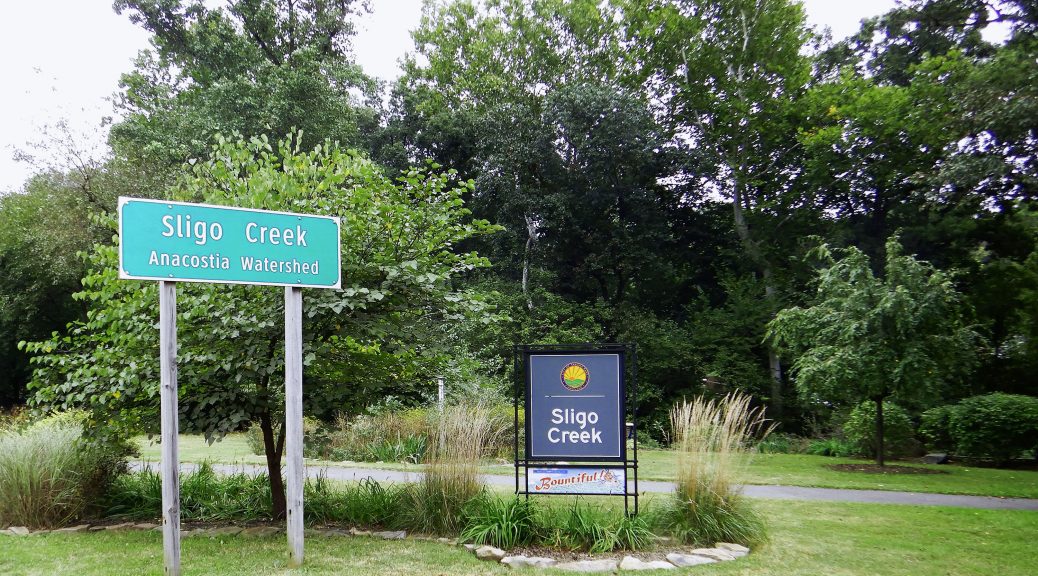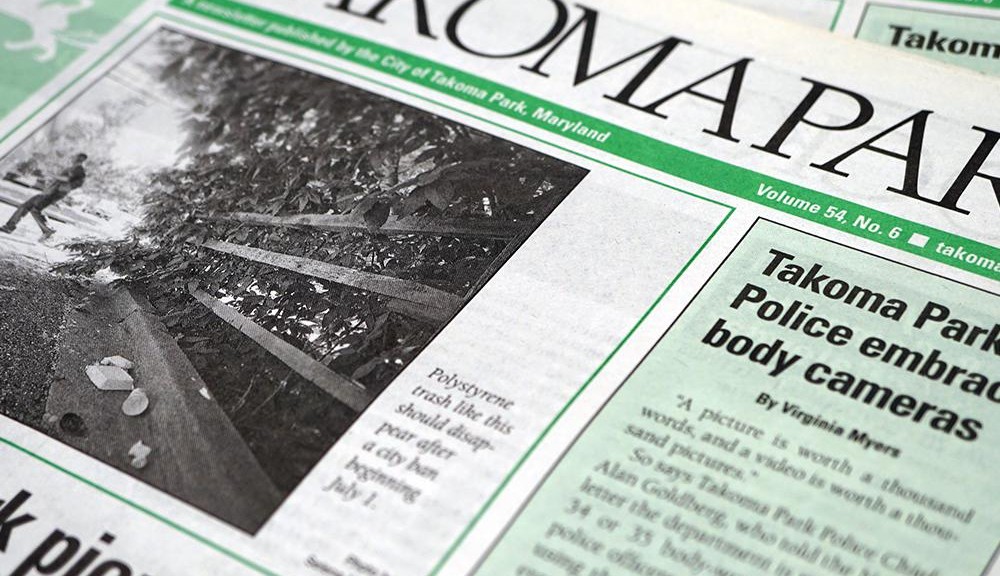Ever wonder what happens to all the “stuff” city crews pick up from your curb each week? Waste management is the common terminology used for all the activities and actions required to manage waste from its inception to its final disposal.
In 2016, the City collected approximately 6,957 tons of municipal waste from single-family homes, small apartment buildings, city facilities and public spaces. The four major streams of waste generated were as follows:
- Solid waste (46 percent)
- Yard waste (32 percent)
- Recyclable material (19 percent)
- Food waste (3 percent)
The City had a total recycling rate of 54 percent, meaning that more than half of the waste generated was diverted from the disposed waste stream.
Waste generated in the City of Takoma Park is collected by the sanitation staff from Monday to Friday. Yard waste is collected on Mondays, and trash, food waste and recycling is collected from four different neighborhoods between Tuesday and Friday. In addition, the City provides fall leaf collection five weeks per year generally beginning during the third week of November and ending in late December.
Here’s an overview of how the City manages waste once it’s collected from residents’ homes.
Yard waste and fall leaves: The collected yard waste and fall leaves are brought to the Public Works yard and passed through a tub grinder, which shreds the material into small pieces. This mulch is then made available to the public for pickup as well as delivery. Yard waste can be used as a top-dressing around trees and gardens. The City also uses mulch in our bio-retention facilities to help filter stormwater.
Trash: The City collects trash from single family and multi-family homes that are fewer than 13 units. On average, a Takoma Park household produces 38 pounds of trash per week. With an assumption of a typical four-member household, the per capita production is significantly lower than the national average of 80.36 pounds of trash, as estimated by the EPA.
Trash collected in Takoma Park is taken to the Northeast Transfer Station in DC, operated by Waste Management Inc. Most waste processed at this facility is then moved by trailer to either King George Landfill or Middle Peninsula Landfill in Virginia. Takoma Park uses this DC facility instead of the Montgomery County trash processing facility in Gaithersburg because the price per ton is lower, and the location is closer.
Recycling: The City collects recycling in a single stream from single-family homes and multi-family homes that are fewer than 13 units. The average household in Takoma Park produces 18 pounds of recycling per week. With an assumption of a typical four-member household, the per capita production is significantly lower than the national average of 30.8 pounds of recycling, as estimated by the EPA. Recycling collected by the City is processed in a facility operated by the Maryland Environmental Service in Prince George’s County.
The City uses the Prince George’s County facility because it accepts recycling in a single stream. The Montgomery County recycling facility requires paper to be delivered separately from the other recyclables – also known as split-stream or dual stream. The City changed from dual-stream to single-stream collection to reduce program costs by using one truck for recycling collection instead of two.
Food waste: Food waste is collected on the same day as trash and recycling weekly. Participation in the food waste collection program is voluntary, and households can sign up for the program on the city website. The collected food waste is transported to Prince George’s County Composting facility operated by Maryland Environmental Service. This facility is the only one in our area currently providing food composting services.
Moving Forward
The City relies on regional waste disposal facilities to process its waste. The Maryland Environmental Services Food Waste Composting facility has set a cap on the tonnage of food waste the city can haul to its composting facility to five tons per week. Currently the City brings just less than four tons of food waste to the facility weekly. Efforts to increase participation in the food waste program would help reduce the amount of waste requiring disposal slightly. However, more is needed to meet area waste reduction goals.
Montgomery and Prince George’s Counties have set solid waste management goals to achieve a new 65 and 60 percent waste diversion rate by 2020, respectively. Their plans highlight public outreach, new policy implementation and innovation to be key strategies toward achieving their goal.
From 2010 through 2015, Takoma Park’s yearly recycling collection remained relatively constant with an average yearly collection of 1,500 tons. Public outreach to better inform residents what is and what is not recyclable and compostable may help us increase recycling tonnage. The City implemented an online tool in 2016 to provide that type of help for residents. The Waste Wizard search bar can be accessed at: takomaparkmd. gov/government/public-works/curbsidecollection-services/recycling-collection.
Additional outreach efforts under consideration include informational mailings, distribution of educational materials to new residents and seasonal signage on bus shelters.
The City has already instituted several policies, including a polystyrene and plastic bag ban to help to decrease trash as well as litter. Additionally, City-sponsored events require collection of recycling and food waste, in addition to trash, to reduce the waste generated from special events. Many communities have used a “Pay as You Throw” system to encourage residents to reduce their waste and increase their recycling participation by charging for the amount of trash generated by each household. These programs use a bag fee or a can fee to generate funding to cover the program. This financial incentive often increases waste diversion by residents as they can more clearly see the cost for the waste they generate. Staff is exploring this option for the City.
Additionally, the next stage of the Green Home Certification program in Takoma Park is expected to include Backyard Habitat and Waste Reduction as new categories for earning light, medium or dark green certifications. Stay tuned to learn more this spring!
This article appeared in the March 2017 edition of the Takoma Park Newsletter. The Takoma Park Newsletter is available for download here.


